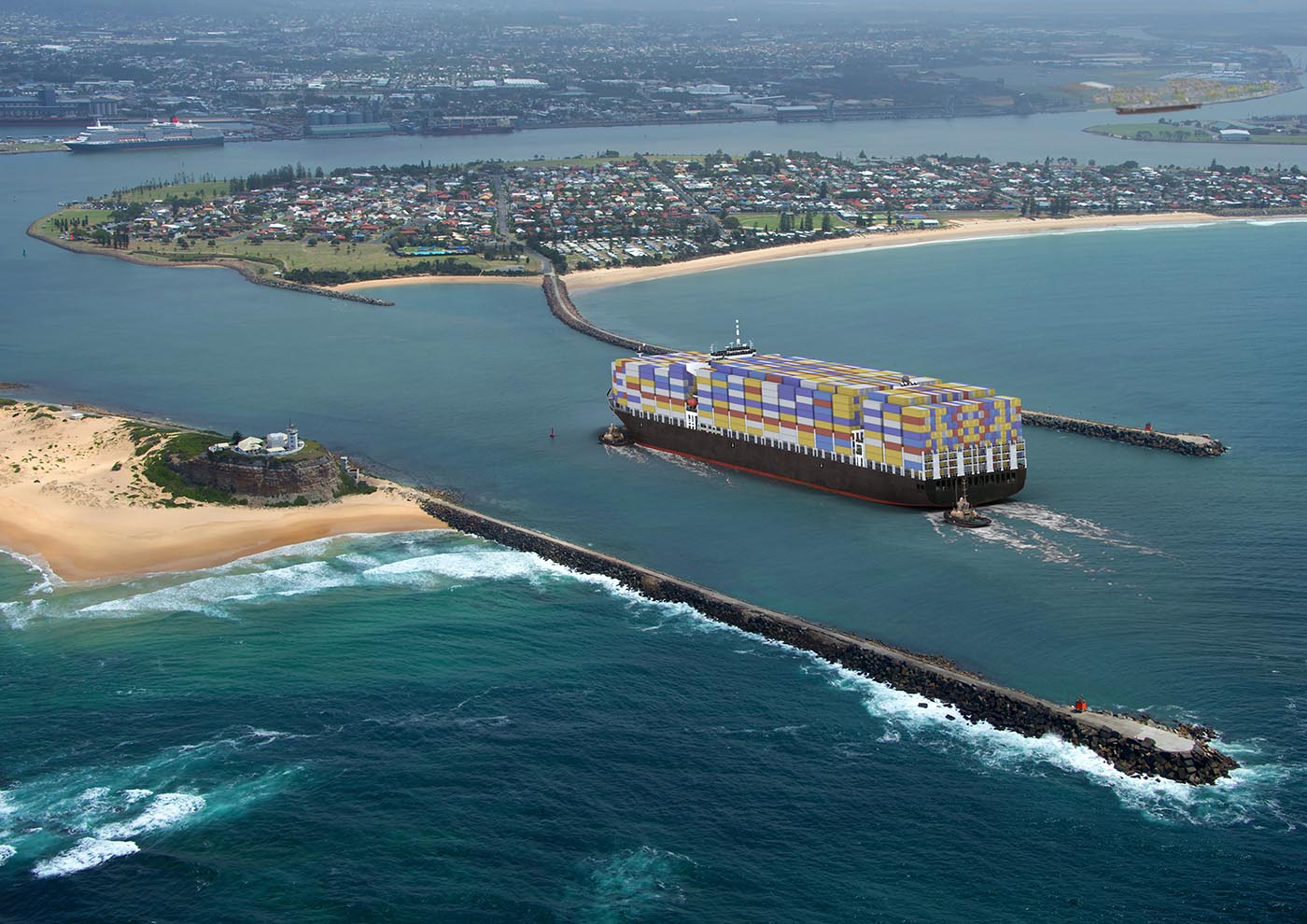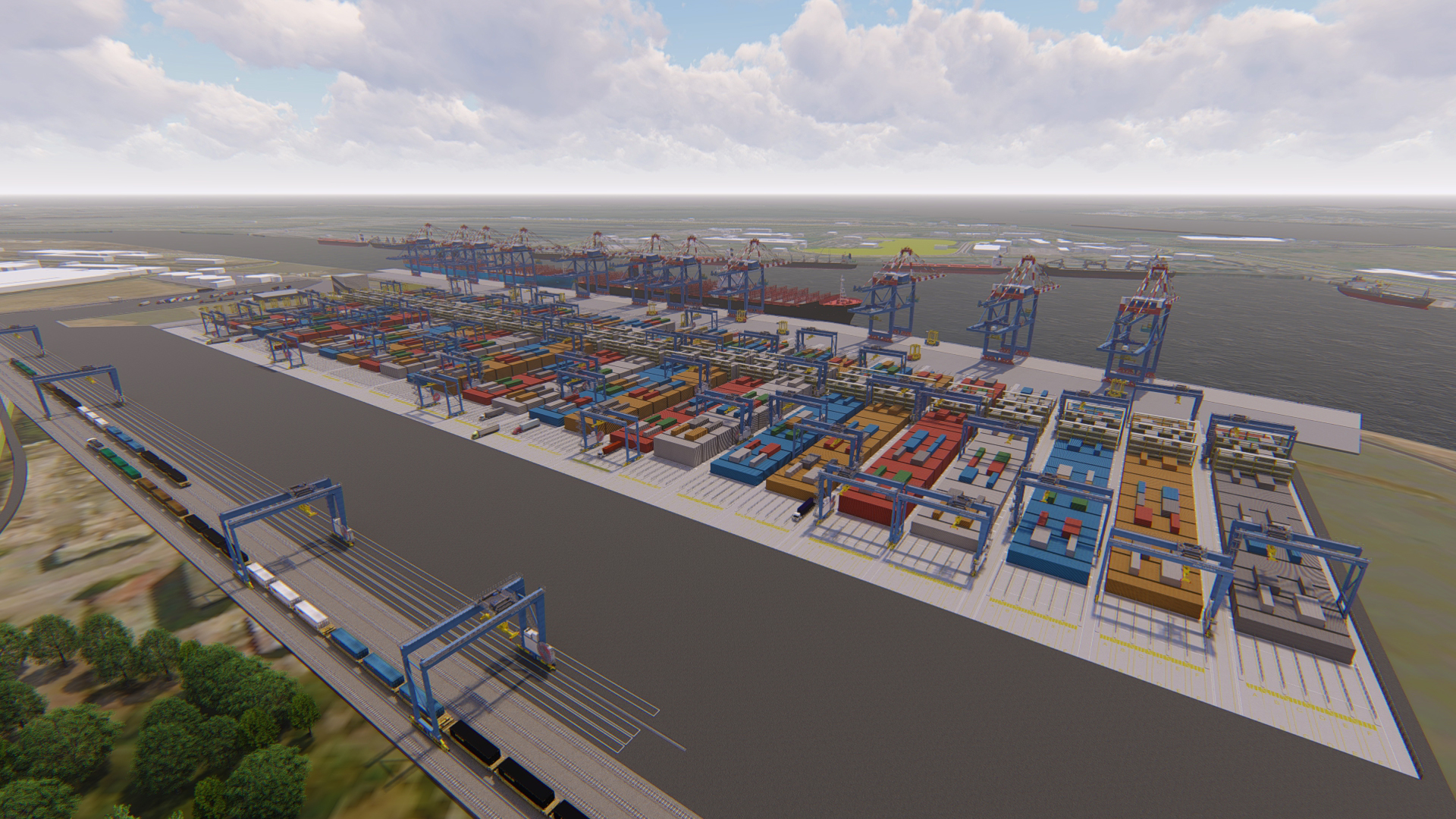

Infrastructure Australia’s announcement today prioritising the development of suitable East Coast deepwater container port facilities should come as music to the ears of internationally-trading businesses across the country, according to Port of Newcastle CEO Craig Carmody.
Australia’s independent infrastructure adviser today noted the need for “a network of deep water ports” along the East Coast to accommodate large ships that are currently unable to visit due to port constraints, marking the issue as a “priority initiative”.
Mr Carmody said Infrastructure Australia had correctly identified a major deficiency in the nation’s preparedness for ever-larger ships, noting problems on both the wharfside and the landside.
“The data is clear – shipping lines around the world have stopped building the ships that Australia’s ports are designed to accommodate*,” Mr Carmody said.
“While IA correctly notes that no Australian port can accommodate the larger, more energy-efficient ships carrying more than 14,000 TEUs^, it is also critical to examine the constraints to existing road and rail infrastructure in handling the nation’s current and future trade volumes.
“Australia is left unable to reap the benefits of potential cost reductions and efficiency opportunities across the supply chain because its ports are designed for ships that peaked in popularity at a time when Cathy Freeman was winning the Sydney 400 metres and the Y2K bug was the biggest threat to their operation.
“The world has moved on – ports overseas are now handling ships of more than 20,000 TEU at a time when Australia’s ports celebrate inefficiently accommodating a ship less than half that size, in some cases having to turn the ship around at the berth to reach containers stacked on the opposite side.
“For a nation that moves 98% of its international trade by sea, being unresponsive to these global trends leaves Australia’s competitiveness and consumers disproportionately exposed.”
Infrastructure Australia is set to examine the issue, including understanding the challenge of channel deepening at existing ports, development of new port locations and enhanced landside access infrastructure at ports.
It has also flagged the need to examine the option of developing “a container port facility that can accommodate the largest ships as a transhipment port for other destinations within Australia.”
The Infrastructure Australia prioritisation announcement follows detailed analysis# by Houston Kemp Economists in 2019.
Mr Carmody said Port of Newcastle was ready to build a new 2 million TEU container terminal, subject to the removal of a $100 per TEU penalty that currently applies.
“We continue to pursue productive discussions with all levels of government to achieve an outcome that unlocks $2 billion of private investment in NSW and spawns the significant associated economic benefits for our state,” Mr Carmody said
“This is about Australia’s international competitiveness and the future of the Hunter and NSW – it is too important to be politicised or caught in endless rounds of legal argy bargy.
“We need to get on with building this infrastructure to ensure Australia does not remain caught in an international competitiveness time-warp and so the Hunter region and its port can diversify.”
Editor’s notes
* – World boxship fleet update: No new orders in New Years sales, Lloyd’s List Maritime Intelligence, 7 January 2020
^ – Shipping containers are either 20 foot or 40 foot. A TEU (twenty-foot equivalent unit) measures the volume in units of twenty-foot long containers. One 20-foot container equals one TEU. Two TEUs equal one FEU (forty-foot equivalent unit). A reference to a 10,000 TEU ship could be accurately simplified as “a ship capable of carrying 10,000 standard twenty-foot shipping containers”.
# – Containerised trade trends and implications for Australian ports – Houston Kemp Economists, January 2019
Port of Newcastle
Port of Newcastle is a major Australian trade gateway handling 4,600 ship movements and 171 million tonnes of cargo each year. With its annual trade worth about $25 billion to the New South Wales economy, the Port enables businesses across the state to successfully compete in international markets. With a deepwater shipping channel operating at 50% of its capacity, significant port land available and enviable access to national rail and road infrastructure, Port of Newcastle is positioned to further underpin the prosperity of the Hunter, NSW and Australia. As custodians of the region’s critical asset, Port of Newcastle is diversifying its trade as it strives to create a safe, sustainable and environmentally and socially responsible Port that realises its potential.
